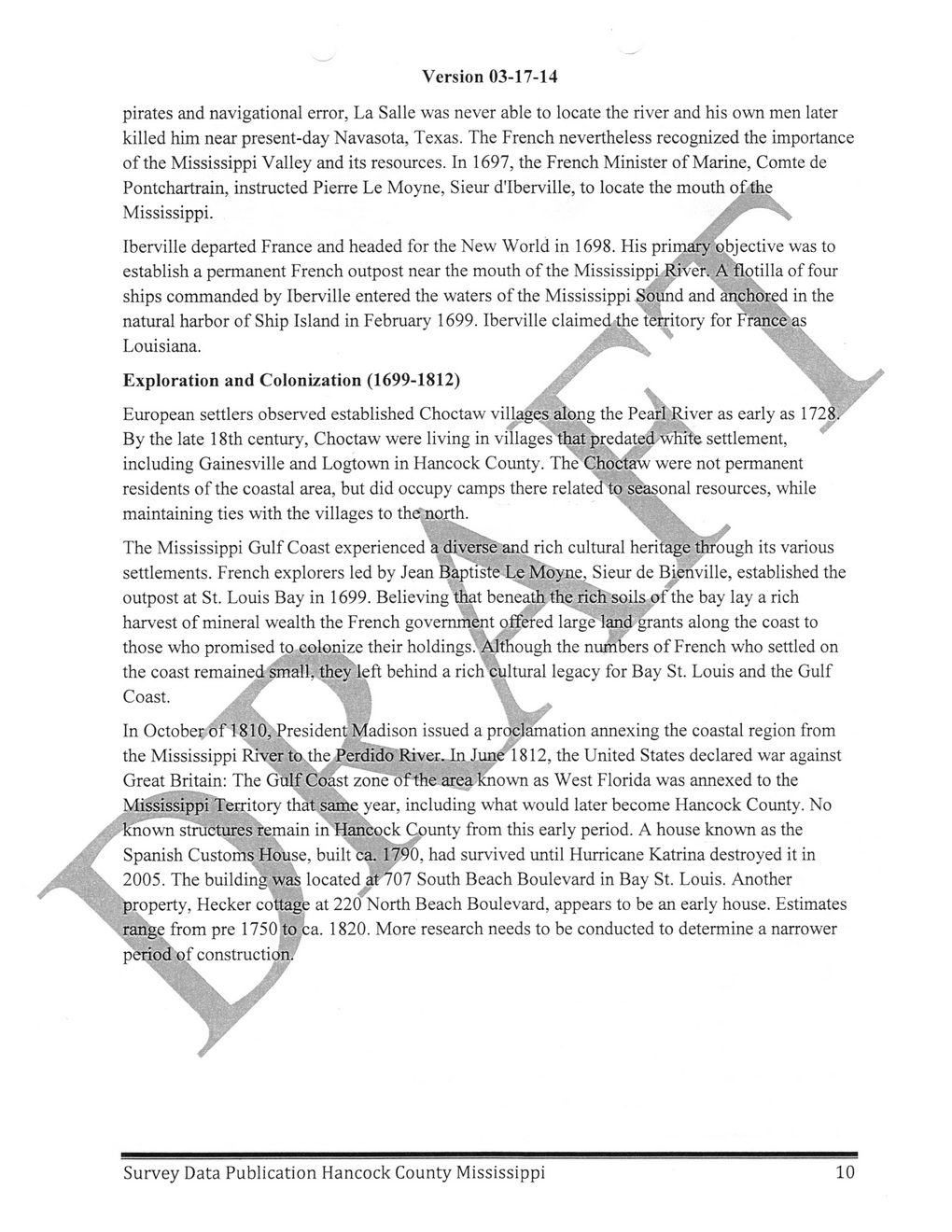This text was obtained via automated optical character recognition.
It has not been edited and may therefore contain several errors.
Version 03-17-14 pirates and navigational error, La Salle was never able to locate the river and his own men later killed him near present-day Navasota, Texas. The French nevertheless recognized the importance of the Mississippi Valley and its resources. In 1697, the French Minister of Marine, Comte de Pontchartrain, instructed Pierre Le Moyne, Sieur d'lberville, to locate the mouth of the Mississippi. .//■'... Iberville departed France and headed for the New World in 1698. His primaiy'objective was to establish a permanent French outpost near the mouth of the Mississippi River. A flotilla of four r' \ X ships commanded by Iberville entered the waters of the Mississippi Sound and anchored in the natural harbor of Ship Island in February 1699. Iberville claimed the territory for France'as Louisiana. Exploration and Colonization (1699-1812) European settlers observed established Choctaw villages along the Pearl River as early as 1728. By the late 18th century, Choctaw were living in villages that predated white settlement, including Gainesville and Logtown in Hancock County. The'Choctaw were not permanent residents of the coastal area, but did occupy camps there related to seasonal resources, while maintaining ties with the villages to the north. The Mississippi Gulf Coast experienced a diverse and rich cultural heritage through its various settlements. French explorers led by Jean Baptiste Le Moyne, Sieur de Bienville, established the outpost at St. Louis Bay in 1699. Believing that beneath, the rich soils of the bay lay a rich harvest of mineral wealth the French government offered large land grants along the coast to those who promised to colonize their holdings.' Although the numbers of French who settled on the coast remained small, they left behind a rich cultural legacy for Bay St. Louis and the Gulf Coast. ; In October of 1810, President Madison issued a proclamation annexing the coastal region from the Mississippi River toNthe Perdido River. In June 1812, the United States declared war against Great Britain: The Gulf Coast zone of the area known as West Florida was annexed to the Mississippi Territory that same year, including what would later become Hancock County. No known structures temain in Hancock County from this early period. A house known as the Spanish Customs House, built ca. 1790, had survived until Hurricane Katrina destroyed it in 2005. The building was located at 707 South Beach Boulevard in Bay St. Louis. Another property, Hecker cottage at 220 North Beach Boulevard, appears to be an early house. Estimates range from pre 1750 to ba. 1820. More research needs to be conducted to determine a narrower period of construction. Survey Data Publication Hancock County Mississippi 10

Hancock County History and Archeology Survey-Publication-Data-2014-(12)